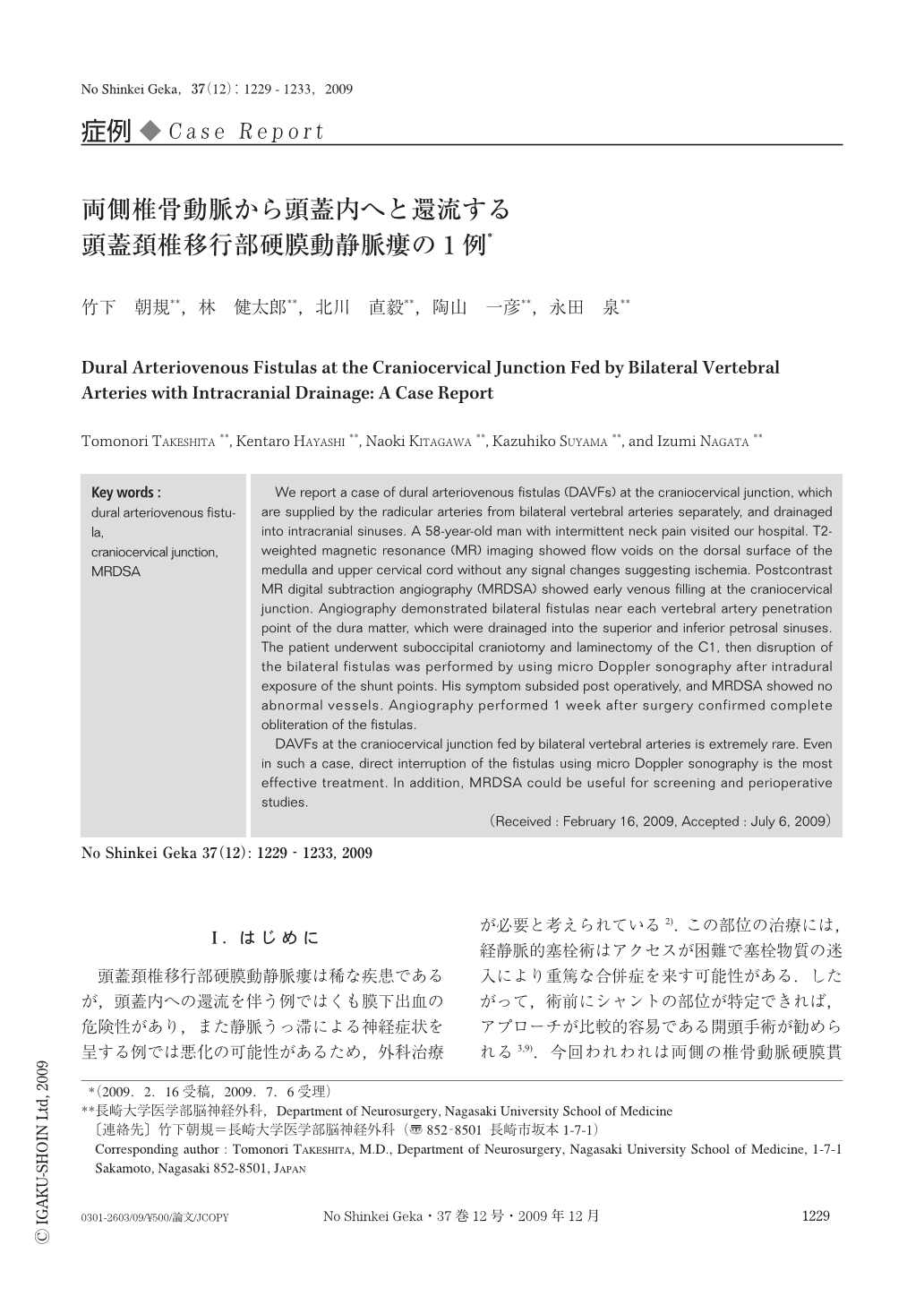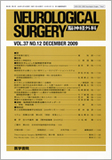Japanese
English
- 有料閲覧
- Abstract 文献概要
- 1ページ目 Look Inside
- 参考文献 Reference
Ⅰ.はじめに
頭蓋頚椎移行部硬膜動静脈瘻は稀な疾患であるが,頭蓋内への還流を伴う例ではくも膜下出血の危険性があり,また静脈うっ滞による神経症状を呈する例では悪化の可能性があるため,外科治療が必要と考えられている2).この部位の治療には,経静脈的塞栓術はアクセスが困難で塞栓物質の迷入により重篤な合併症を来す可能性がある.したがって,術前にシャントの部位が特定できれば,アプローチが比較的容易である開頭手術が勧められる3,9).今回われわれは両側の椎骨動脈硬膜貫通部にfistulaを形成し,頭蓋内静脈へと還流する極めて稀な頭蓋頚椎移行部硬膜動静脈瘻を経験したので,文献的考察を加え報告する.
We report a case of dural arteriovenous fistulas (DAVFs) at the craniocervical junction, which are supplied by the radicular arteries from bilateral vertebral arteries separately, and drainaged into intracranial sinuses. A 58-year-old man with intermittent neck pain visited our hospital. T2-weighted magnetic resonance (MR) imaging showed flow voids on the dorsal surface of the medulla and upper cervical cord without any signal changes suggesting ischemia. Postcontrast MR digital subtraction angiography (MRDSA) showed early venous filling at the craniocervical junction. Angiography demonstrated bilateral fistulas near each vertebral artery penetration point of the dura matter, which were drainaged into the superior and inferior petrosal sinuses. The patient underwent suboccipital craniotomy and laminectomy of the C1, then disruption of the bilateral fistulas was performed by using micro Doppler sonography after intradural exposure of the shunt points. His symptom subsided post operatively, and MRDSA showed no abnormal vessels. Angiography performed 1 week after surgery confirmed complete obliteration of the fistulas.
DAVFs at the craniocervical junction fed by bilateral vertebral arteries is extremely rare. Even in such a case, direct interruption of the fistulas using micro Doppler sonography is the most effective treatment. In addition, MRDSA could be useful for screening and perioperative studies.

Copyright © 2009, Igaku-Shoin Ltd. All rights reserved.


